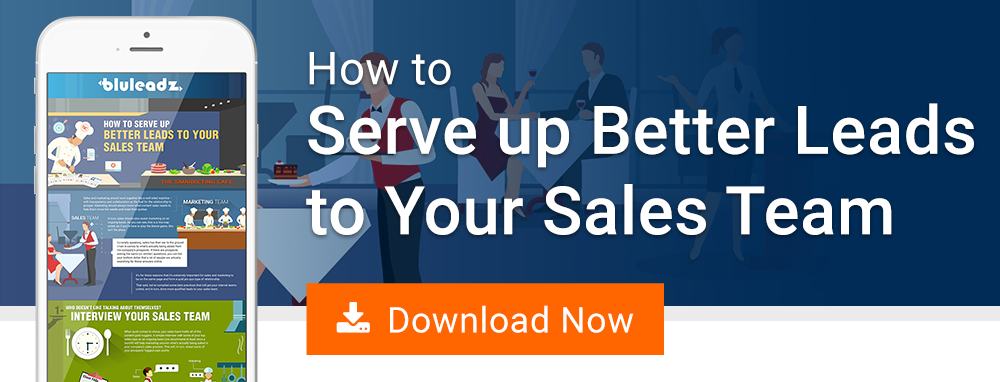The manufacturing industry is always growing and changing and the same can be said about how they are marketing to customers. There are fewer direct mailings and cold calls and in their place are inbound marketing strategies for lead generation. But many manufacturers still struggle with attracting potential customers to their brand via lead generation.
According to HubSpot’s marketing statistics for 2017, 65 percent of marketing and sales professionals said their greatest challenge was generating traffic and leads.
To overcome these issues and grow your revenue, here are lead generation techniques for manufacturers:
1. Create Buyer Personas
With any marketing strategy, it is important to have a good understanding of your target audience to attract potential buyers and effectively generate leads. Perform research by interviewing prospective and current customers and come up with a list of different buyer personas/profiles that represent your best customer.
The profiles should answer the following questions related to the buyers’....
Demographics
- Gender
- Age range
- Income (if applicable)
Background
- Industry
- Company
- Job title/role
Motivations/Challenges
Examples
- Cost savings
- Greater efficiency
Goals
Examples
- Improve return on investment
- Boost worker/customer safety
These buyer personas will be essential to creating content that converts them into leads and developing relationships that close sales.
2. Optimize SEO To Increase Brand Visibility
Now that you have your target audience in mind, shift your attention to your website and search engine optimization (SEO). As the name suggests, SEO is about maximizing your visibility on search engine pages so potential customers can more easily find your brand.
This is another reason why manufacturers should create customer profiles: to know what leads are searching for and the keywords they use for these searches. Where your brand falls in the rankings of the search engine result pages will determine whether leads will be aware of your company.
When optimizing SEO, you want to be on the first page of Google and as close to the top as possible so customers click on links to your pages.
Smart Insights reported on Advanced Web Ranking data that showed manufacturers in the first three positions on search engine result pages accounted for the majority of clicks. For example, auto manufacturers ranked No. 1 received 60 percent of clicks while hardware manufacturers in a similar position had 51 percent.
There are two common ways to think about SEO:
On-Page SEO
This means optimizing the aspects within your website that affect search engine rankings, including:
- Page titles: How you name your page (with a target keyword) as it appears on search engines
- H1 headings: The most prominent/biggest text on a page
- Alt text: Text used by visually impaired readers and search engines to describe images
- Page content: The content on your page, ideally containing keywords or topics related to searches
- Internal linking: Text links and the pages to which they direct
Off-Page SEO
Off-page SEO encompasses factors outside of your website, such as:
- External linking: The number of outside sites that link to you
- Social media shares: How people are sharing your pages on social media
- Blog networking: These are sites that also provide links to your site
On-page and off-page SEO work together so you can boost your lead generation.
3. Improve User Experience (UX) & Website Navigation

SEO and UX work in conjunction for successful lead generation. While your ideal customers have found your website and now aware of your brand, you will not be able to convert these leads into paying customers without proper website design and navigation.
If leads find they are taking too much time trying to find content that will help them learn more about your manufacturing company and products, they will likely leave the website and not convert.
4. Publish Relevant & Educational Content
Companies generally gravitate toward blogging when they want to populate their website with content for lead generation. Business to consumer companies that published blogs at least 11 times per month received more than 4 times as many leads as firms that blogged an average of 4 to 5 times per month, HubSpot noted.
In addition to blogging, manufacturers often offer different forms of content, such as whitepapers, for lead generation. To gather lead contact information, companies can provide a whitepaper meant to educate their audience about how to recognize pain points, how their products or services can alleviate those issues and which purchases are best for them.
Companies can link to content from their blogs, social media accounts and more for greater visibility and enhance SEO for target keywords.
Examples of other content include:
- Ebooks
- Infographics
- Research reports
- Downloadable slideshows
- Videos
- Custom Images
- Social media posts
- Email blasts
With a competitive industry like manufacturing, companies need to step up their lead generation using the techniques above to stand out.


Rob Steffens
I am the Director of Marketing here at Bluleadz. I'm a huge baseball fan (Go Yankees!). I love spending time with friends and getting some exercise on the Racquetball court.